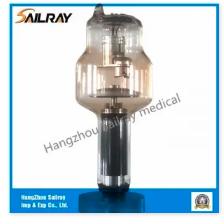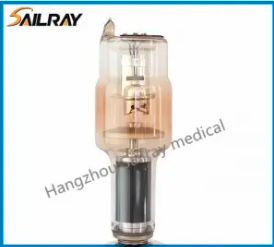The importance of rotating anode X-ray tubes in the fields of medical imaging and radiation therapy cannot be overstated. These advanced devices play a vital role in the diagnosis and treatment of cancer, providing high-quality imaging and precise radiation delivery that are essential for effective patient care.
Learn about rotating anode X-ray tubes
A rotating anode X-ray tube is an X-ray tube that utilizes a rotating disk made of a high atomic number material, usually tungsten, to produce X-rays. The rotation of the anode dissipates the heat generated during X-ray generation, allowing the tube to operate at higher power levels and produce more intense X-ray beams. This feature is particularly useful in medical applications, where high-resolution images are required for accurate diagnosis.
Role in cancer diagnosis
In cancer diagnosis, imaging clarity and detail are critical. Rotating anode X-ray tubes greatly fulfill this need by providing high quality radiographic images. These tubes are commonly used in computed tomography (CT) scans to help detect tumors, assess their size and determine their location in the body. The enhanced image quality provided by rotating anode systems allows radiologists to identify subtle changes in tissue density that may indicate malignancy.
Additionally, in emergency situations where time is of the essence, the speed with which these tubes can produce images is critical. Rapid acquisition of high-resolution images can help diagnose cancer promptly so treatment can begin quickly.
Role in cancer treatment
In addition to diagnosis, rotating anode X-ray tubes also play a vital role in cancer treatment, especially radiation therapy. In this case, the precision and intensity of the X-ray beams produced by these tubes can be used to target cancerous tissue while minimizing damage to surrounding healthy tissue. This is achieved through techniques such as intensity-modulated radiation therapy (IMRT) and stereotactic body radiation therapy (SBRT), which rely on the high-quality imaging capabilities of rotating anode systems to deliver accurate and effective radiation doses.
The ability to generate high-energy X-rays is particularly beneficial for treating deep-seated tumors that are difficult to reach with traditional therapies. The rotating anode design can produce X-rays with sufficient penetrating power to ensure that the radiation can effectively reach and destroy cancer cells located deep in the body.
Future outlook
As technology continues to advance, the role of rotating anode X-ray tubes in cancer diagnosis and treatment is expected to further develop. Innovations such as real-time imaging and adaptive radiation therapy are on the horizon and promise to enhance the capabilities of these systems. Integrating artificial intelligence and machine learning into the imaging process can also improve diagnostic accuracy and treatment planning, ultimately leading to better patient outcomes.
In summary, rotating anode X-ray tubes are an indispensable tool in the fight against cancer. Their ability to generate high-quality images and deliver precise radiotherapy makes them crucial for the diagnosis and treatment of this complex disease. As research and technology advance, the impact of these devices on cancer treatment will likely continue to expand, offering hope for improved detection, treatment and survival rates for patients around the world.
Post time: Nov-11-2024



